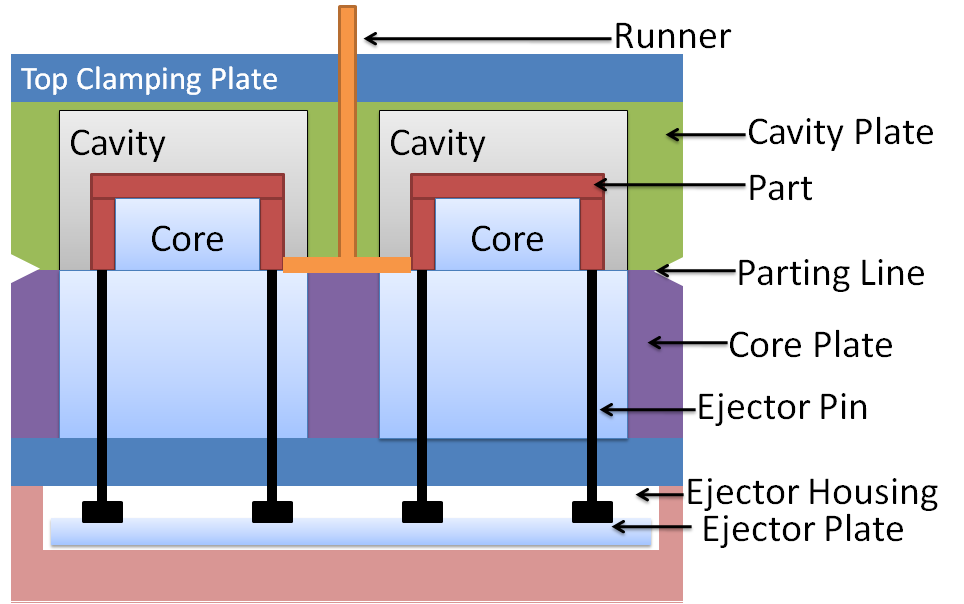The Art and Science of Injection Molding: Unveiling the Magic of Molds
As we delve into the fascinating realm of molds for injection molding, we uncover the meticulous craftsmanship and scientific precision that lie at the heart of this manufacturing process. Molds serve as the cornerstone of injection molding, playing a pivotal role in shaping raw materials into intricate and precise components utilized across various industries. The convergence of artistry and engineering in designing and creating molds encapsulates the essence of this innovative field, where creativity meets technical expertise to produce objects of remarkable complexity and functionality.
Types of Injection Molding Molds
When it comes to molds for injection molding, there are primarily two common types used in the industry: cold runner molds and hot runner molds. Cold runner molds are the traditional and more cost-effective option, as they feature a system where the molten plastic is injected into a runner and then solidifies in the mold cavity. On the other hand, hot runner molds are a more sophisticated choice that eliminate the need for runners by keeping the plastic in a molten state throughout the process.

Another important distinction among injection molding molds is between single-cavity molds and multi-cavity molds. Single-cavity molds are used when producing small quantities of complex parts, as they allow for greater control over the molding process. In contrast, multi-cavity molds are preferred for high-volume production runs, where multiple identical parts can be manufactured simultaneously. This efficiency in production makes multi-cavity molds a popular choice in industries such as automotive and consumer electronics.
Furthermore, molds for injection molding can be categorized based on their construction material. Steel molds, specifically tool steel and stainless steel, are known for their durability and ability to withstand high temperatures and pressures. Meanwhile, aluminum molds are a lighter and more cost-effective alternative, making them suitable for prototyping and short production runs. The choice of mold material depends on factors such as production volume, part complexity, and budget constraints.
Design Considerations for Molds
Considering the intricacies involved in the design of molds for injection molding is crucial in achieving optimal results. Key factors to take into account include material selection, mold complexity, and part geometry. The choice of materials for the mold must align with the specific requirements of the production process, ensuring durability and efficiency.
When delving into mold design, the complexity of the mold plays a significant role in determining the overall quality of the finished product. Factors such as the number of cavities, surface finish requirements, and cooling system design all influence the complexity of the mold. Striking the right balance between complexity and functionality is imperative for successful mold design.
Part geometry is another critical aspect that must be carefully considered during mold design. The intricacies of the part's shape, size, and features directly impact the mold design process. Proper part geometry analysis is essential to ensure that the mold can successfully replicate the desired shape and dimensions with precision. By carefully analyzing these design considerations, manufacturers can optimize mold performance and produce high-quality products efficiently.
Maintenance and Care for Molds
Regular maintenance of molds for injection molding is crucial to ensure optimal performance and longevity. Proper cleaning after each use helps prevent buildup of residue that can affect the quality of the final products. Inspecting the molds for any signs of wear or damage is also important to address potential issues early on and avoid costly repairs.
In addition to routine cleaning, storing the molds properly is essential to protect them from dust, moisture, and other environmental factors that could degrade their quality. Proper storage can help extend the lifespan of the molds and maintain their precision and functionality over time. Keeping detailed records of maintenance schedules and any repairs or modifications done to the molds is beneficial for tracking their history and performance.
Collaborating with experienced mold makers and technicians for professional maintenance and care services can provide expert insights and recommendations for optimizing the efficiency and durability of the molds. Their expertise can help identify potential issues, suggest improvements, and offer customized solutions to enhance the overall mold performance and productivity.